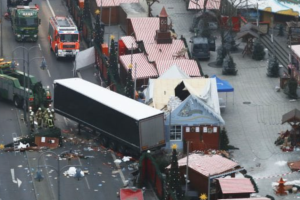First modification:
This Tuesday, August 23, marks the 80th anniversary of what is the deadliest battle in the history of mankind. The confrontation between Nazi Germany and the Soviet Union at Stalingrad was the turning point in World War II, since the German defeat was the beginning of the Nazi collapse on the continent.
The Battle of Stalingrad takes place in the context of the Nazi invasion of the Soviet Union. Although both countries had previously signed a non-aggression pact, Adolf Hitler decided to declare war by surprise in June 1941, invading this nation on three fronts that sought to seize Leningrad, Moscow and kyiv. An operation that allowed the capture of vast tracts of land in a few weeks and hundreds of thousands of Soviet soldiers.
However, of those three cities only kyiv was captured. The great extension that the USSR had and the harsh autumn and winter in this nation made the Nazi blitzkrieg not so effective. That is why Hitler decided to change his strategy and direct his force to the south. His initial objective was to reach the Caucasus to be able to supply himself from the oil wells in the area, a fundamental fuel for Germany if he wanted to continue with the war.
But halfway to this goal was the city of Stalingrad -currently known as Volgograd-, an objective without much strategic importance that, on the contrary, became a priority for Hitler. The German leader considered that if his troops took over the city that bore Stalin’s name, the moral blow would be definitive. That is why he divided his troops in two: one advanced would go to the Caucasus, while another would try to take Stalingrad. A decision questioned by the German high command.
Stalin accepted the challenge and armored Stalingrad with thousands of Soviet soldiers and an order of resistance above all.
The objective of the leader of the USSR was that, under no circumstances, his troops would surrender, and he issued the order to “Not one step back”, a ruling that punished all Soviet soldiers who deserted with death. The German bombings and offensives caused an average of about 4,000 Soviets to die each day during the first weeks. A situation that, however, did not placate the resistance of the city.
At the head of the entire defense was Marshal Zukov, who saw to it that the Germans were forced to take street by street to advance. In the midst of a total war, Stalingrad became a skeleton of rubble that favored the appearance of urban guerrilla warfare and the use of snipers, whose sole objective was to assassinate high-ranking Nazi commanders and destroy the morale of the soldiers, who were 24 hours in tension.
But despite the tenacious Soviet resistance, the Germans took over 70% of the city in a few months, suggesting that Stalingrad would inevitably fall into Nazi hands. However, the cost for the Germans was still very high. The Nazis saw that capturing a street took hundreds of lives and the increasingly extreme weather conditions multiplied the hardships, since they had to endure temperatures of up to -40 degrees Celsius and hardly received food.
Operation Uranus
A situation that led to the Soviets developing Operation Uranus in November 1942. Aware that the troops surrounding Stalingrad were not German, but poorly equipped Romanian and Italian, they concentrated up to one million seven hundred thousand soldiers who crossed the enemy lines to form an encirclement around the Nazi army, a strategy that locked up more than 300,000 German soldiers.
German desperation became evident from that moment. Thousands of soldiers began to die of cold, disease or hunger, and some even committed suicide given the impossibility of returning home. German rescue attempts were unsuccessful, and despite Hitler’s refusal to surrender, Marshal Friedrich Paulus capitulated in February 1943. The Soviets took 90,000 German soldiers prisoner, of whom only 6,000 would return home after passing through Germany. labor camps in Siberia.
Up to 800,000 German soldiers and their allies died in those months. Something that must be added to the more than 1,600 tanks, 900 planes and 6,000 artillery pieces that were destroyed. For its part, the USSR lost 1.5 million people in this battle alone… and tens of thousands of tanks, planes and artillery pieces.
The failure at Stalingrad was a turning point in World War II and the withdrawal of Nazi Germany.
Until then, the German army had taken the initiative on all the fronts it had opened, but its resounding defeat at Stalingrad showed that its capacity was limited. From that moment, the Soviet Union began to command several offensives from the East, while from the West and South, the allies began to land on the European continent and retake territories. A situation that would end up forcing the final defeat of Nazi Germany and the suicide of Adolf Hitler in April 1945.















Add Comment